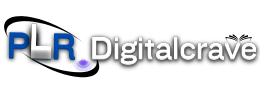
Unlocking Passive Income: Creating and Selling Ebooks, Courses, and Digital Guides
In today’s digital age, the concept of passive income has gained significant traction as more people seek ways to generate income streams that don’t require constant, active participation. One of the most popular avenues for creating passive income is through the creation and sale of ebooks, courses, and digital guides. These digital products not only offer valuable information to consumers but also provide creators with an opportunity to monetize their expertise and knowledge. In this comprehensive guide, we’ll explore the process of creating and selling ebooks, courses, and digital guides, along with strategies to optimize your passive income streams.
Understanding Passive Income
Before diving into the specifics of creating digital products, it’s essential to understand what passive income is and its advantages. Passive income refers to earnings derived from activities that require minimal effort to maintain once set up. Unlike active income, where you exchange time for money (like a traditional 9-to-5 job), passive income allows you to earn money while you sleep, travel, or focus on other projects.
One of the key benefits of passive income is its scalability. Once you create a digital product like an ebook or an online course, you can sell it to an unlimited number of people without incurring additional production costs. This scalability makes digital products an attractive option for entrepreneurs and content creators looking to expand their revenue streams.
Creating Ebooks for Passive Income
Ebooks are digital books that can be easily created and distributed online. They can cover a wide range of topics, from self-help and personal development to technical guides and fiction. Here are the steps to create and sell ebooks for passive income:
1. Choose a Niche: Select a niche or topic that aligns with your expertise and audience’s interests. Conduct market research to identify popular trends and keywords related to your chosen niche.
2. Create Compelling Content: Develop high-quality content that provides value to your readers. Ensure your ebook is well-written, properly formatted, and includes visuals like images, charts, or infographics where relevant.
3. Design a Professional Cover: Design an eye-catching and professional ebook cover that attracts potential buyers. Tools like Canva or Adobe Spark can help you create visually appealing covers even if you’re not a graphic designer.
4. Format Your Ebook: Use ebook formatting tools or software like Microsoft Word or Scrivener to format your content for digital publishing. Pay attention to readability, font choices, and overall layout.
5. Publish and Distribute: Choose a platform to publish and distribute your ebook, such as Amazon Kindle Direct Publishing (KDP), Smashwords, or Gumroad. Optimize your ebook’s metadata, including title, description, and keywords, for better visibility in search results.
6. Promote Your Ebook: Market your ebook through various channels, including social media, email marketing, blogging, and online communities. Offer promotional discounts or free chapters to attract initial readership and gather reviews.
Creating Online Courses for Passive Income
Online courses are another lucrative option for generating passive income. They provide a structured learning experience for students and can cover complex topics in-depth. Here’s how to create and sell online courses effectively:
1. Choose a Topic: Identify a topic or skill that you’re knowledgeable about and that has demand in the market. Conduct surveys or research online forums to understand what potential students are looking for.
2. Outline Your Course: Create a detailed course outline that breaks down the content into modules or lessons. Define learning objectives, include quizzes or assignments, and plan supplementary materials like videos, worksheets, or downloadable resources.
3. Create Course Content: Develop high-quality video lectures, written content, and supplementary materials based on your course outline. Use tools like Camtasia, Adobe Premiere Pro, or Teachable’s built-in course creation features to produce professional-looking content.
4. Choose a Platform: Select a platform to host and sell your online course, such as Udemy, Teachable, Thinkific, or Podia. Each platform offers different features, pricing options, and audience reach, so choose one that aligns with your goals and budget.
5. Optimize for Engagement: Engage with your students through discussion forums, live Q&A sessions, and feedback loops. Encourage interaction and provide ongoing support to enhance the learning experience and increase course completion rates.
6. Market Your Course: Promote your online course through social media, email marketing, content marketing, and collaborations with influencers or industry experts. Offer limited-time discounts, create compelling course trailers or previews, and gather testimonials from satisfied students to build credibility.
Tools and Resources
To streamline the process of creating and selling ebooks, courses, and digital guides, consider using the following tools and resources:
1. Ebook Creation Tools: Canva, Adobe InDesign, Scrivener
2. Ebook Publishing Platforms: Amazon KDP, Smashwords, Gumroad
3. Online Course Creation Platforms: Udemy, Teachable, Thinkific, Podia
4. Video Editing Software: Camtasia, Adobe Premiere Pro, iMovie
5. Graphic Design Resources: Unsplash, Pixabay, Canva
6. Email Marketing Platforms: Mailchimp, ConvertKit, AWeber
7. SEO Tools: Google Keyword Planner, SEMrush, Moz
8. Analytics and Tracking: Google Analytics, Facebook Pixel, UTM parameters
Conclusion
Creating and selling ebooks, courses, and digital guides can be a rewarding venture that generates passive income over time. By identifying a niche, creating valuable content, optimizing for SEO, and leveraging effective marketing strategies, you can unlock the potential of these digital products to generate consistent revenue streams. Continuously monitor and analyze your sales data, gather feedback from customers, and iterate on your products to stay competitive and maximize your passive income opportunities in the digital marketplace.
